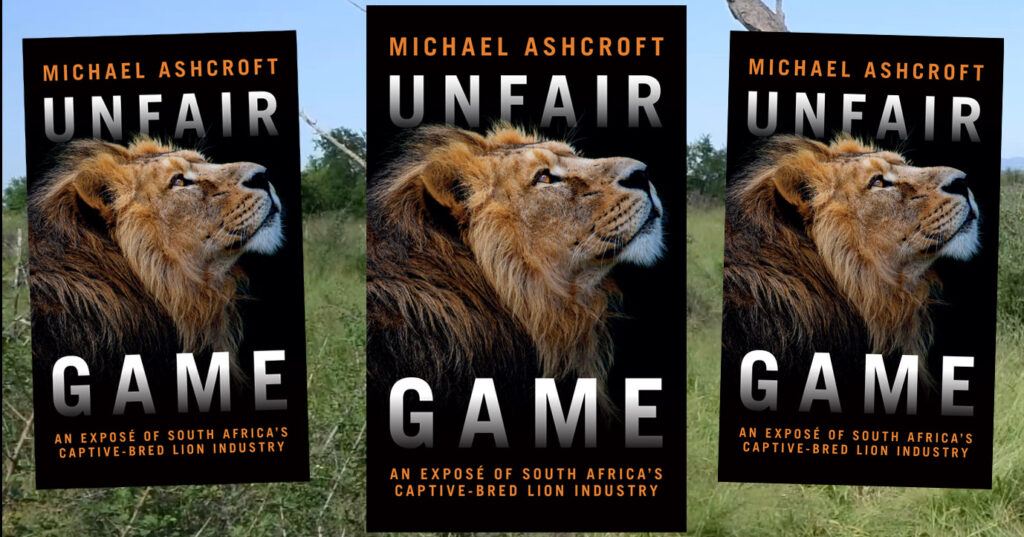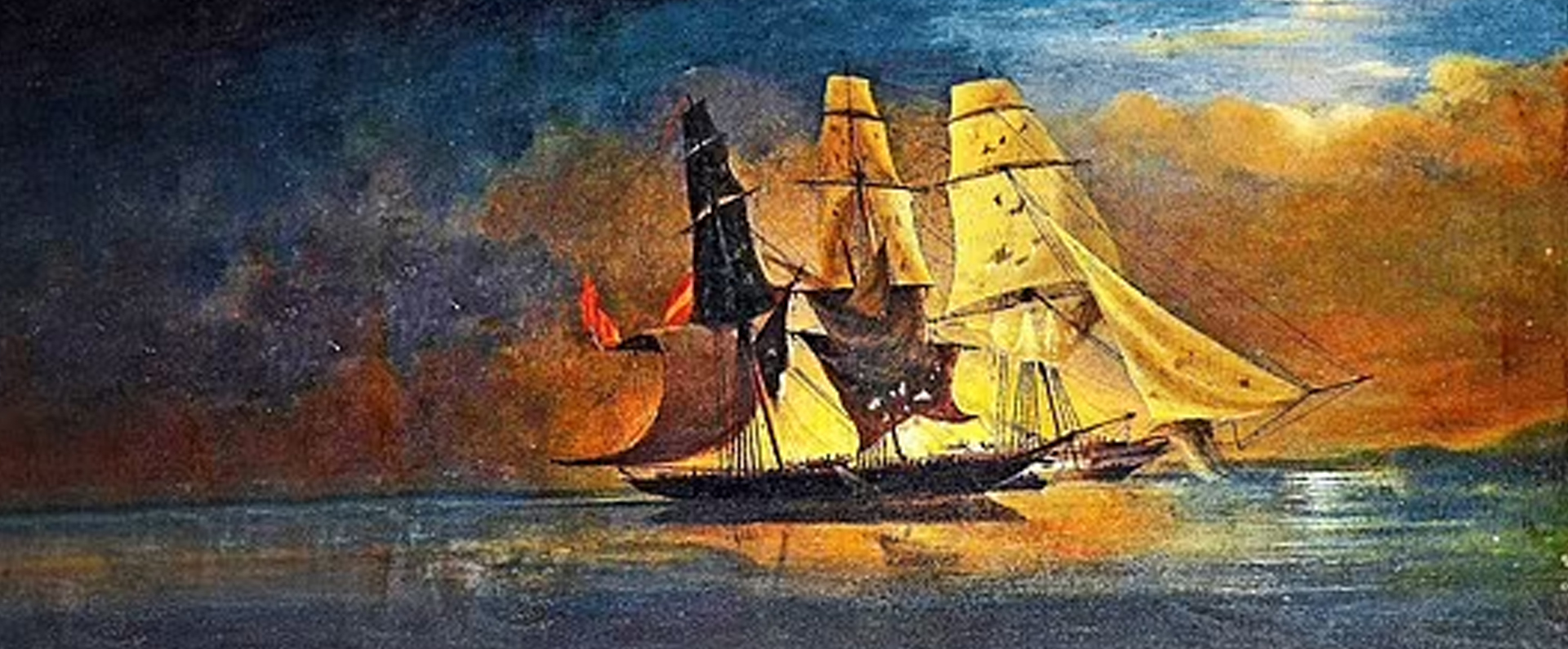
Published on 24 August 2020 in The Witness, South Africa.
Article about Unfair Game by J. Nozipo Maraire, Zimbabwean, neurosurgeon, entrepreneur and writer
Until the lion learns how to write, every story will glorify the hunter.
Author investigates the dark and dangerous world of the captive-bred lion industry.
SOUTH Africa has long been regarded as a conservation champion and a nation deeply committed to the ongoing protection of its wilderness areas and the iconic wildlife species that call them home.
However, these are challenging times for the “Rainbow Nation” as its game reserves and national parks battle the effects of the Covid-19 pandemic and associated lockdown that has devastated valuable revenue streams derived from eco-tourism.
The country’s conservation agencies and non-profit organisations are also fighting a war on a different front against a government whose policies and agendas are consistently undermining efforts to curb the illegal wildlife trade, sullying its international reputation in the process.
This is nowhere more evident than in the controversial captive lion breeding industry that exploits up to 12 000 “farmed” lions for the purposes of feeding the canned hunting sector and burgeoning trade in lion bones.
In his book Unfair Game, philanthropist Lord Michael Ashcroft shares his year-long investigation into the dark and dangerous world of the captive-bred lion industry.
He describes it as “a sickening trade that unwittingly involves the tourism and volunteering industries, with international travellers from across the world duped into believing that activities such as lion cub petting, walking with lions and volunteering at lion sanctuaries (in actual fact breeding farms) are somehow contributing to the conservation of lions in the wild”.
In reality the lions are bred commercially and eventually sold to canned hunting farms where they can be shot by high-paying international hunters, after which their butchered carcasses are sent in their hundreds to the Far East for use in “traditional” medicine.
It is, Ashcroft contends, “a cycle of cruelty fuelled by incredible greed for the billions of rands it makes a small, select cabal of farmers, breeders and hunters”.
Read an extract from Unfair Game by Lord Michael Ashcroft here.
CANNED CAPTIVES
Lions reach maturity at three to four years of age.
Depending on their sex, by then they will have grown to a shoulder height of approximately 3 feet, a length of 6 or 7 feet, and a weight of 350 – 500 lbs (160-225 kg).
It hardly needs to be pointed out that, if they live in captivity, at this stage of their lives their size and strength makes them extremely difficult to control.
In the wild, lionesses, which are smaller than lions, are the more active members of the species. Generally, they hunt and provide for the pride, while lions tend to protect the pride.
For this reason, captive-bred lionesses can be busier and therefore more troublesome for their handlers than males.
Having been raised within a tourist attraction of some description, the experience of both lions and lionesses of being hand-reared, cuddled and stroked by the general public in South Africa means they will have little or no fear of humans. Therefore, they pose a threat to safety.
Whatever time they have left alive will almost certainly be spent in a carefully controlled environment effectively as inmates, living either behind bars or in a fenced compound.
If they are already living in a sightseeing attraction, lions will likely be moved to an enclosure upon reaching maturity.
They will remain there for an indeterminate period so that they can be seen, but not touched, by tourists.
Usually, they are considered to be surplus to requirements between the ages of four and seven.
This is also the time at which the manes of the males will begin to look truly majestic and, consequently, when they will be-come most desirable to trophy hunters.
Although their handlers may claim to inquisitive visitors that they will be shipped to a country such as the Democratic Re-public of Congo to live out their remaining years in peace and comfort, the reality is invariably very different.
The odds are that they will be transported elsewhere in South Africa, either to enter a breeding programme or to die.
Whenever it is decided that they are to be sent to their death, they will either be shot in a canned hunt or killed at a slaughterhouse.
It is essential to point out that the danger to the public of moving captive predators like lions between locations is not to be underestimated.
This most recently became apparent in October 2019 when, it was reported, the driver of a Toyota Landcruiser pick-up truck, which was taking three males and one female on a trailer from a breeding facility in Hertzogville in the Free State to a hunting farm at Leniesdeel in North West Province, crashed on the R34 highway.
As a result of the accident, one lion escaped but, mercifully, it did not get far because it had been sedated before the journey.
It was quickly darted and then loaded back into a crate to continue the trip together with the remaining three creatures. A case of reckless and negligent driving was opened against the driver of the Toyota.
A passenger, believed to be a farm worker, sustained a broken leg and was later transferred to Klerksdorp Hospital.
Luck certainly played its part in ensuring that no innocent passers-by were attacked.
As is now clear, during its life a captive lion in a tourist facility can potentially generate significant sums of money for those in charge of it simply through its natural beauty.
The fascination a lion holds among paying customers is almost boundless, as confirmed by the vast number of people who like to pose for photographs and videos alongside them.
Perversely, that same level of enthusiasm among some members of the public applies when it comes to killing lions and then cannibalising them.
Many will wonder how these magnificent beasts, whose mere existence is one of the chief reasons that thousands of animal-loving tourists want to visit South Africa each year, can be exploited in a civilised country in the twenty-first century.
Yet the reprehensible fact is that the law constitutes just as much of a threat to lions as do lion owners, farmers, breeders and hunters.
It is important to explain briefly how this is so. “There’s a long and very complicated history relating to the legalities of the captive-bred lion industry in South Africa;’ says Amy P. Wilson, a lawyer and director of Animal Law Reform South Africa.
While there is a plethora of issues with the current regulation of wildlife, including its enforcement, in my view there are two fundamental underlying legal circumstances which form the basis as to why the captive-lion business has flourished.
Firstly, while animals are generally considered as property in most jurisdictions in the world, laws passed during apartheid in South Africa effectively enshrined the property status of wildlife, too.
This status gives owners a large amount of discretion as to what they can do with their “property” or on their land and has largely promoted the acommodification of wild animals, including lions.
Secondly, Section 24 of the Constitution guarantees the right to the “sustainable utilisation … of natural resources”.
The interpretation of this provision by government has effectively enshrined the wide-scale use and abuse of wild animals – so-called resources – for commercial purposes, the limitations of which are unclear.
As there is also no legal definition of “sustainable utilisation”, there exists no consensus of what it means in practice, so true conservation and environmental rights have been flouted for the economic benefit of a few.
This interpretation means that wild lions, once the pride of South Africa, have essentially been reduced to agricultural animals.
Wilson is right. Shockingly, in May 2019, the South African government quietly approved an amendment to the Animal Improvement Act which covers live-stock breeding.
Captive lions are among thirty-three animals, including rhinos and zebras, which are now considered to be farm animals as a result of this change.
As Don Pinnock, the author of an article revealing this, concluded, “By the stroke of a legislative pen, a list of iconic and in some cases endangered wild animals can now be manipulated as farming stock.
What happens next is anyone’s guess;’
The amendment was made without any public consultation in response to a request from breeding societies and has prompted fears of an increase in experiments to create cross-breeds and genetically “superior” animals.
It gives breeders the ability to operate on a par with livestock farmers by carrying out artificial insemination, the collection of semen and embryos and the transfer of embryos and genetic material.
Even the hunting lobby has voiced misgivings about the change.
On hearing the news, the South African Hunters and Game Conservation Association claimed that species on the list would be “at risk of genetic manipulation and genetic pollution”.
What this boils down to is that human selection has been given a licence to trump natural selection.
After all, this is what lies behind the domestication of any species.
It is therefore true to say that in the twenty-first century, the South African government will have sanctioned lions becoming a domestic species.
Politicians and bureaucrats tampering with nature in this way without thinking through the outcome ought to give everybody in the world pause for thought.
• Unfair Game by Lord Michael Ashcroft is published in South Africa by Jonathan Ball publishers.
• All royalties from the book will be given to wildlife charities in South Africa.
For more information, visit:
LordAshcroftWildlife.com


